ICBE Conference
eBook report with speaker summaries and delegate inputs.
eBook report with speaker summaries and delegate inputs.
Welcome to the eBook and report from the Annual ICBE Conference that was held on Thursday, May 10th in the Killashee Hotel, Naas, Co Kildare. This year, we evolved the innovative and interactive event format, which included highly relevant presentations from practitioners and renowned speakers, a moderated forum, live blogging, interactive Group Action Learning and this eBook take-away.
Over the course of the morning and afternoon our 9 speakers covered the three pillars of Productivity, People and Technology. These ‘one to many’ talks from leaders in our sector prepared all the attendees for the group challenge, discussions and knowledge sharing that took place in moderated sessions after each pillar.
These group sessions discussed challenges prepared by the speakers in pairs and shared them as a group. We have captured the essence of this tacit knowledge and the immense experience of the 11 groups in this eBook. These probing sessions uncovered coal face experience and ideas from the delegates.
Rather than just provide access to knowledge, the impact of which can rapidly decay, we wanted attendees to take the learnings and internalise them by immediately analysing its relevance to them through an industry challenge. Through working in groups each attendee also has access to a broad range of shared peer to peer insights which also enhanced the networking and further expanded their knowledge set.
The day was expertly MCed by broadcaster Matt Cooper who also interviewed our keynote speaker this year Dr Niamh Shaw. Niamh’s presentation was an inspiring
story of vision, failure and perception of self.
Finally we are also conscious that we live busy lives and it can be difficult to reflect and recall the learnings from events when we get back to our workplaces, so we live blogged and captured the inputs from attendees as the day evolved.
This eBook contains a synopsis of the morning talks and the collated shared insights from the attendees. Naturally we could not include everything in this eBook but it is designed to be living document and encourage all readers to visit the conference microsite on www.theknowledgemap.biz to evolve the
conversation.
I do hope you enjoy this eBook and look forward to taking these discussions forward.
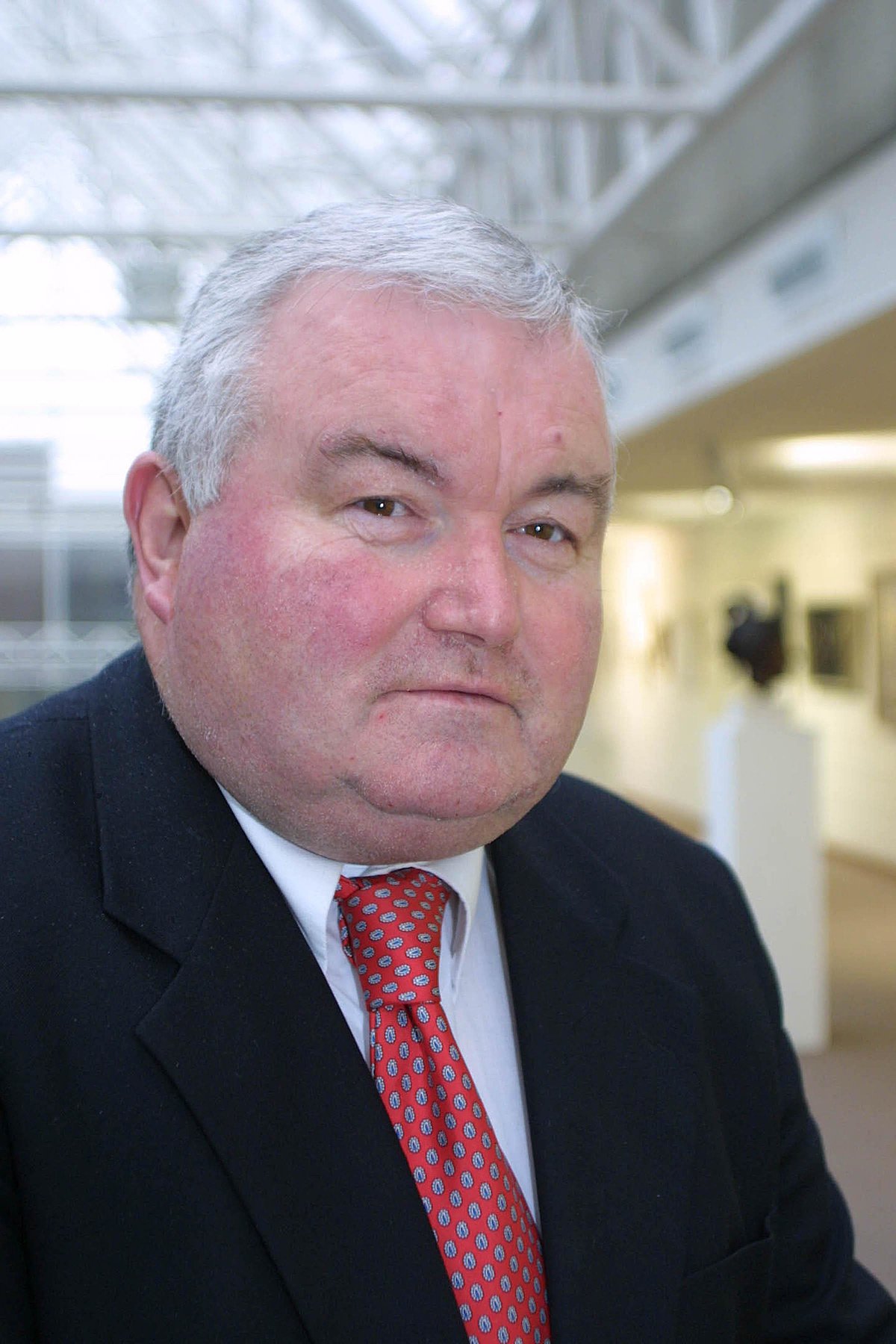
Eamon Murphy.
For over 25 years, ICBE has facilitated and supported the exchange of best practice knowledge in Ireland. ICBE has created a knowledge-exchange network of like-minded individuals who share best practice in many different ways and we continue to pioneer on behalf of member companies at the cutting edge of advancements in technology, data analytics, co-robotics, Factory 4.0 and knowledge mapping.
Please let us know if you would like to know more about becoming a member of ICBE. One of the ICBE team would be delighted to bring you through the many
benefits of ICBE in more detail or visit you and let you & your colleagues know more about ICBE and how we can help your company.
“ICBE has given us invaluable support in our Operational Excellence journey which has been recognised through the award of the Shingo Prize. The centre has provided us with a network to share knowledge and best practice across different businesses.” – Sean Kelly, Business Excellence Manager, Abbott Longford
“We frequently use the Call for Support service that ICBE have to offer. We find
this service invaluable, it helps us to benchmark and share information with other companies. We have found the resource to be a fantastic learning and sharing forum where we offer to other companies some of the better practices we have brought in and we learn from others on best practices that they have in place. We also, through the forum, establish and deepen our contacts and network within the industry. Thank you, ICBE, for providing this service.” - Mary Collins, Senior Director, Human Resources, Europe - Merit Medical Systems
“Just a short note to say thank you very much for including me in the Mentoring Networking Event at Bausch & Lomb - ICBE for all the organisation and Jackie for the great information you are so willing to share. I have been saved about 6 month’s work as will definitely use a lot of the methodology you shared. Much appreciated.” - Jane Mitchell, OD & Talent Management, Manager, Stryker Ireland
Enjoy our summary of the eight speakers at the conference focusing on Productivity, People and Technology.
John Quirke, SA Partners
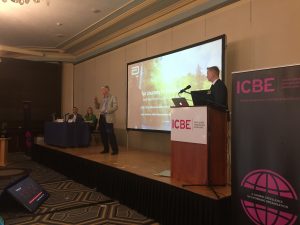 Two common themes come up when we review how businesses approach problem solving.
Two common themes come up when we review how businesses approach problem solving.
One. The lack of a joined up system to enable effective problem solving across the business.
And two. The level and quality of process focus within the organisation.
Given the development of enterprise excellence thinking, those organisations that achieve consistent levels of sustainable excellence are hard wired to think in core business systems and the behaviours those systems need to support.
In his presentation John asked the audience a series of questions.
John pointed out that we need different ‘heads on us’ when we approach problems depending on the ‘Lean maturity’ of the organisation. If we are in a place where there is constant firefighting and we cannot predict outcomes with confidence then our problem solving focus is on identify standards and finding new ways for the process to ‘speak to us’ so we can understand better what is going on. In more mature organisations the focus becomes prediction and likelihood and also questions around what is possible? Or, what if?
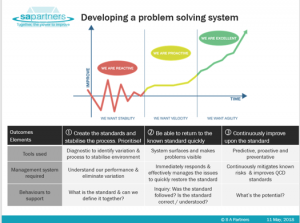
In problem solving there is a tendency to focus on the tool not the overall systems and a the behaviours needed.
A second problem is the level and quality of process focus.
In order to demonstrate this John asked the group to carry out a card experiment where attendees attempted to drop a card onto a flipchart size sheet of paper. Following the standard process almost none of the tables got the card on to the sheet. John then went through the ‘normal’ problem solving activity and the way organisations can jump to solutions without really understanding what is at the core of the process.
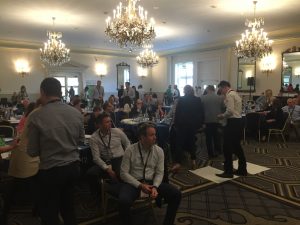
Using the same standard conditions with one slight change (how the card is held) John demonstrated the problem related to the control of the aerodynamics of the card's flight to the target area. John explained that by understanding the aerodynamics of the cards flight and what was need to ensure a perfect flight, we could then create well thought out standard work documents that are truly applicable to the process and will ensure consistent predictable results.
His advice was we need to focus on experimentation and curiosity to allow the development knowledge which enables us to better investigate what is happening in the processes.
Problem solving should be a learning experience a discovery. Sometimes we are finding things and solving problems that nobody has solved before. The quality of the documentation controlling this problem the story telling around how we discovered and controlled it in a way is our legacy.
In order to achieve this, we need to connect with and enable our innate human intuitiveness. The stone age did not end because we ran out of stone! Homo Sapiens is hard wired to prod, poke, investigate, grunt ‘why’. and then work as tribe to make things better. This is what we are.
Judith McMullan, Global OpEx Manager, Abbott.
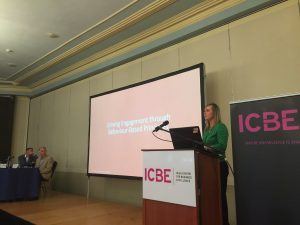
Our Journey to Excellence
Judith currently manages the Shingo program across Abbott Nutrition Supply Chain (ANSC), where they have a number of sites challenging for the Shingo Prize over the next three years. In October 2017, Abbott Nutrition, Sligo were the first site in the ANSC network to receive the prestigious Shingo prize.
When they started the Shingo process three years ago they liked the Enterprise wide nature of the process, how it mirrored their values and behaviours and connected the dots between people, process, purpose and performance offering them an external validation of their excellence journey.
The process now engages everyone, everyday with a culture of continuous improvement and problem solving with all teams working together to achieve enterprise alignment. This is achieved through the deployment of the Management Operating System (MOS), standard work and visual management and is measured
through the premier plant balanced scorecard.
Judith explained how the company drove engagement through Behaviour-Based Principles using the Shingo methodology. The Shingo model leverages an interconnection of Guiding Principles, Systems, Tools and Results with culture at its centre. Guiding Principles are aligned to Systems which in turn drive guiding principles. Systems in turn select Tools which enable systems. Tools achieve results and results refine tools. Results also affirm Guiding Principles which drive results. At the centre of all of this is culture manifested in behaviour.
As a hierarchy the Shingo model has results at the top which created customer value, followed one step down by Enterprise Alignment, creating constancy of purpose and systematic thinking. Continuous Improvement focuses on process, embracing scientific thinking, flow and pull value, assure quality at the source and seeking perfection. Finally at the base of the pyramid are cultural enablers by leading with humility and respecting every individual.
Judith shared how the people within ANSC are considered to be their greatest asset across all functional groups and it is the collaboration, shared behaviours and common goal that make them a prize winning organisation.
Abbott Nutrition have achieved MOS implementation and standardisation across 14 plants in the ANSC network, across many cultures, also encompassing the functional groups – demonstrating that excellence is not limited to the shopfloor and is relevant and achievable globally.
Standardisation through MOS
Judith explained the range of Cultural Enabler activities and structures that Abbott have in place to ensure leading with humility and respecting every individual. This includes ensuring Safety is always the number one priority, comprehensive auditing to ensure compliance and continuous improvement, an investment in the development of employees through specific leadership programs such as Mindful Leader, through strong visual management achieved through a 5-tiered meeting process, and a culture of recognition of their pledge behaviours.
According to Judith one of the biggest complements during a Shingo visit was when the Shingo examiners shared with the leadership team how it was not easy to
distinguish leaders from managers or associates because they had built a strong culture of leading with humility and respecting every individual.
Judith shared how ANSC have evolved on their excellence journey, continuously challenging the tools, systems and measures they have in place and if they are driving an improvement in performance. Asking questions such as “If it is not adding value or making a difference, why are we using it or measuring it?” One such example is in the revisions to visual management, allowing room for personalisation as opposed to stringent standardisation to ensure it is driving results and meeting the needs of individual teams.
The customer is at the heart of everything that Abbott Nutrition do, with their products spanning the continuum of health, and providing life-enhancing nutritional products for infants through to the elderly. To remind of this and ensure they never become complacent, they hold an annual customer appreciation day. Judith shared the most recent example of this in Sligo, where a father of two daughters dependant on nutritional devices manufacturing at the Sligo facility came to site to share their story with all employees. This provides an opportunity to understand the user experience, look at opportunities for further improving our product and touch the hearts and minds of employees by bringing the customer insight to the shopfloor.
Abbott Nutrition to directly correlate their operational excellence journey to improved business results and cost improvements year over year, with the systems and tools implemented allowing employees to work smarter, not harder. Since the deployment of their Management Operating System, they have seen their journey develop through the various phases of Build, Grow, Evolve and today it is in a Sustain phase, yet continuing to challenge and improve.
On Oct. 12th 2017, Abbott Nutrition Supply Chain, Sligo Ireland, received notification from the Shingo Institute that they had won the prestigious Shingo Prize per the recommendation of the Shingo examiners. This was a proud moment for all Sligo employees and the entire Abbott Nutrition division, being the first site to have received this external validation of their performance.
.
Gerry Cahill Roche. Productivity in Crisis.
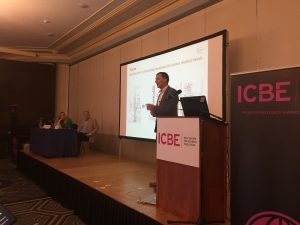
Gerry is the Managing Director of Roche’s Pharmaceutical manufacturing facility located close to Ennis in County Clare.
The facility opened up in 1974, was put for sale in 2016 and is now due to close on at the end of 2019.
In 2016 300 people were let go and the feedback from HR was people were good but didn’t know what they know. They could not sell themselves to employers.
This change in the company’s facility posed a serious management challenge in keeping people engaged for the 3 years of a closure scenario.
How do you turn misery into something positive?
The corporate mandate was the flawless supply of medicine which is life-saving, the only source world-wide with annual revenues of €700 million and produced in a highly regulated environment.
The local role was to upskill, apply skills at work to show success and give candidates successes that they could share in job interviews. Management also wanted to leave the site with pride.
The Change message was clear to delivering above average results will improve job opportunities. A series of lean tools and behaviours were use to articulate the benefits for both the business and theindividual. The individual was rewarded with enhanced employability and building capability while the business received stability and capacity.
A report card in 2017 showed the programme was going in the right direction but with the brakes on with leadership not aligned, managing huge change and work streams not connected. Difficult dialogue asked if management were “content with slightly above average performance”
The 2018 plan improved the process by a top down lean deployment and growing the learning organization with visual management, A3, Kata and leaders standard work enabling the upskilling of employees.
The results from the programme include some solid metrics with
Gerry finished his presentation by sharing his Leadership learnings including
Leaders don’t have all the answers!!!! It’s ok to say I don’t know!!!
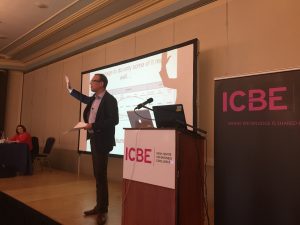 Kevin Eyre began his talk by recalling the great conversations and inputs that took place over the group discussion. For him what is relevant is the talk and not behaviour and how conscious we are of what we are actually saying.
Kevin Eyre began his talk by recalling the great conversations and inputs that took place over the group discussion. For him what is relevant is the talk and not behaviour and how conscious we are of what we are actually saying.
According to Kevin we give a lot of attention to how people think but behaviour (the acts they take) all require the use of language.
It is not possible to do any of these things without the use of language.
What is the effect that talk has on how we think and behave
Can we influence what happens to people?
He encourage people to ponder “How do I feel, how might I be inclined to act once someone tells me what to do versus when someone asks me how I feel.”
This has a massively differently impact.
If someone takes an interest I can quickly get engaged and its my responsibility to
take ownership.
All is a consequence of asking a question rather than telling someone what to do.
Kevin outlined the typical challenges that managers face and the different roles they play from Commander, Instructor, Agent Provocateur, Negotiator, Trainer, Mediator, Consultant, Faciilitator, Mentor and Coach. In addition they are also expected to not just respond, but to create A Growth Mindset as well covering
This demanding challenge and the pressure of what managers feel causes them to sound off.
They spend most of their time telling and suggesting.
“As children we ask, have fun, be curious, moment where everything was amazing, we lose this as managers” added Kevin.
For a manager sometimes talk is a part of our action (Depends on how I interact. What I say and how I say it.), most often, action is a part of our talk and sometimes, our talk is action (what we say is what we are doing).
Lots of behaviour is fixed but talk is habitual and changeable and has a big effect on mood state. It all starts to change behaviour.
In changing our Inter action with employees a sudden change can be alarming.
We need to explain why we are choosing to interact differently and work through this strange new world and way of communicating. We need to be able to talk about the talk as we are changing the relationship.
According to Kevin the real challenge for manager is developing and deploy sensitive, skilful and timely dialogue.
In answering questions from the audience Kevin added that some managers can
feel a short term loss of control as they modify their dialogue skills but they find they actually get more control by asking than dictating.
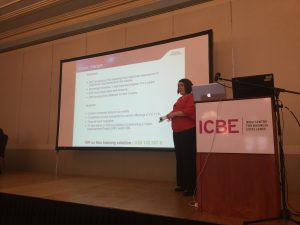
Siobhan Geary Boston Scientific Clonmel. Developing internal talent to meet the challenging needs of the business.
“How much does it cost to hire an employee?” was the opening statement by Siobhan Geary from Boston Scientific, before informing attendees that the average cost is €22-34,000. This is based on the average industrial wage of 45k with the cost ranging from 50 to 70% of the employees first year salary.
“This should be a motivating factor” to develop your internal talent.
In 2010 Siobhan needed to recruit Lean and Operational Excellence personnel but initial job searches came back empty handed. As a stop gap solution, they developed a lean associate role from the operator population and in 2013 decided they needed to standardise the training and upskill these Lean Associates.
Siobhan developed a long list of skills and competencies based on shareholder involvement that were needed. In conjunction with their training department she developed a 12 module programme which including experiential learning.
The initial shock was that the programme would have resulted in 218 hours of classroom time and 476 hours of experiential training. This would have meant taking resource out of the company for 6 months, when its staffing was already stretched.
Outside of the business concerns was the employee motivation, how to define and put together a good value proposition to meet the ‘What’s in it for me?’ These employees already had the job, were getting good feedback and in essences this course was not going to provide any additional opportunities. The employee after all this training would be returning to their original roles.
In Boston Scientifics highly, regulated world qualifications and accreditation are necessary for compliance for these employees to take on other positions.
Siobhan set on the task to see if she could find a body that would accredit this training.
Her feeling was it could be level 7 training. While searching for an accrediting body she still needed to build support for the concept and course with the organisation. To build a compelling vision she created a framework to visualise and contextualise the horizontal integration and vertical alignment of the program to the organisation reflecting how people could fit and move within the organisation.
Then she brought in some different stakeholders within various functions of the company from supply chain, quality, to engineering to help build support and momentum in the program. The feedback was they also had excellent people in each group but they did not have the qualification to advance. They requested an education solution that would meet both the Lean/Op ex needs but also there’s.
This recognition of a bottleneck of talent who are not lacking in capability but rather academic qualification prevents them from moving up in the organisation, required a broader ranging and higher academic solution then originally scoped.
Together with Siobhan, John O Riordan from the training department reached out
to the Institute of Industrial Engineering, Tim Byrne and Skillnet, Victoria Wilmott organised a group meeting with other companies in the region to share the problem and potential solutions. Fortunately WIT were present in the form of Darrin Taylor and Aidan Walsh from the Business School, they responded with a Level 7 Lean Fundamental program and a Level 8 Higher Diploma in Operational Excellence programme that covered lots of the key skills and competencies that the business needed.
The real game changer was that WIT would recognise prior learning, industry expertise, as a qualifying factor for the programme. The intense programme (1 year) was easier for employees to commit too and the program structure with direct face time with lectures made it a lot easier for those employees who did not have previous formal 3rdlevel education to settle into the courses. Skillnets also supported the program by providing 20% funding.
As part of the programme Siobhan linked a Value Improvement Project worth €50,000 as an expectation to anyone who successfully applied for the course. The purpose of this was to provide an opportunity to practice the project management element of the course in the business environment and generate a return on investment for the organisation.
The results of the programme have been exception with 53 successful graduates by 2018, 70% of these employees have been promoted, with a further 16 enrolled this year. Feedback from the graduates have been really positive. Programme directors Darrin Taylor and Aidan Walsh also providing glowing references about our employees and how this program is an example of Global Best Practice of academic and industry collaboration.
The business impact of the programme and over past year $8.7 million worth of projects loaded to the VIP system which includes the saving of over $300k on the course cost alone.
Finishing up her presentation Siobhan compared the potential hiring cost for those 37 promoted employees of €1.2 million versus the €220k spent on their education. This represents a 5 times return on investment alone, not to mention the 30X return on the investment based on the $8.7 m worth of projects delivered.
Cormac Ó Conaire Design Partners
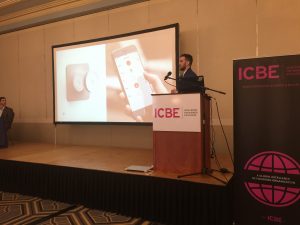
Cormac showcased some of the variety of designs created by the Design Partners' team and their clients including world-leading products and apps from Panasonic, Google, Logitech, Silvair and S3Connected Health.
All of these projects posed different challenges, for instance, when designing a 'simple' headset for a mass audience the design team must consider complex ergonomic details, anthropometrics and mechanical engineering because everyone heads are different. His team aims to resolve those complexities, in collaboration with their clients, in a beautifully clean experience for the end users. Cormac also pointed out that an understanding of optimising workflows is crucial when designing digital products to make them look, feel and function better. The products shown had a highly advanced technology behind them, however Cormac stressed that technology is simply an enabler to create meaningful experiences for people, and that it is important to focus less on the technology and more on the experiences it can create.
Cormac also discussed that Irish companies have an opportunity to utilise design as a competitive edge, pointing out that, according to the Design Management Index, companies that embrace design are outperforming others by a large factor. This is also reflected in a Gartner report that records that 89% of competitive advantage is based on customer experience, and not a technological breakthrough or innovation.
Design can often be seen as a cosmetic layer applied but the earlier it is embedded in the new product development process the more impact it can have. New product development is not just about innovation and needs to be thought about holistically. Cormac pointed out how design can bring differentiation, create happier customers and mitigate risk when launching new products, through market analsysis, human-centred design and user testing, respectfully.
Pointing to the power of good design Cormac added creating something beautiful is more than aesthetics and can have a profound impact on people and how they feel.
Design begins with two fundamental questions: Do you know your customers and what do you stand for? The intersection of what your customer is seeking and what you stand for should guide every part of the design experience.
In understanding your customers you need to ask have you spent time with them in their space.
The design process also needs to understand ‘what you stand for’ and not just important for leadership. It must reflect values that can be articulated authentically.
Cormac illustrated these points in work Design Partner did for Logitech G, who decided to refocus on the video gaming space from a position of decline and knew they had to invest in reinventing themselves through design.
Design Partners spent time studying the gaming community which revealed the high stakes nature of gaming (one competition has a prize fund of 17 million). Gamers also employed performance coaches worried about lag in the gamers performance due to poor peripherals. They were not looking for a toy to play with, they were looking for tools to win with. Prior to this Logitech were targeting an older audience. They also studied what Logitech stood for This discovery journey led to a new process including the use of high speed cameras to capture rapid hand
movements and demonstrated the rigour that needs to be applied to really understanding the customer and delivering high performance products to them. This collaboration was a huge success for Logitech, who have multiple products as the best selling in the world, with a consistent growth in business.
Cormac finished his talk emphasising the equation for success in new product development being:
Who are your customers + What do you stand for = Reflected in all touch points in the customer experience.
Ray O’Cinneide, Tyndall Institute
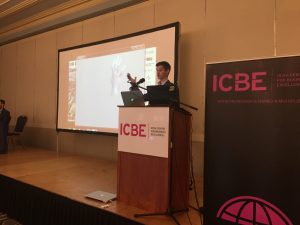 “10 years ago Brendan O’Flynn watched Tom Cruise in minority report manipulating a screen with a glove and asked ‘wouldn’t it be cool’ if we could create that” said Ray O’Cinneide in kicking off his talk on the story of the Smart Glove.
“10 years ago Brendan O’Flynn watched Tom Cruise in minority report manipulating a screen with a glove and asked ‘wouldn’t it be cool’ if we could create that” said Ray O’Cinneide in kicking off his talk on the story of the Smart Glove.
Tyndall had technology and the research capability to make it and the basic idea evolved over a number of years. Early version fell off hands and broke and they knew they needed to make it into something that people want. To do this they partnered with Bray based Design Partners who helped focus on three things
The process helped them think about customers and also the need to have robust software without which the hardware is useless. Over series of iterations the
Smart Glove has received awards and finally went on the NDRC discovery programme.
Through the programme they learnt to
The €150 billion industry for AR and VR was a natural market for them with a vertical focus on the segments that would most benefit including:
Ray finished his presentation by demonstrating the glove in action that allows the user to reach into that simulated virtual world. During the group sessions potential uses in the manufacturing sector were expanded.
Barry Kennedy, IMR
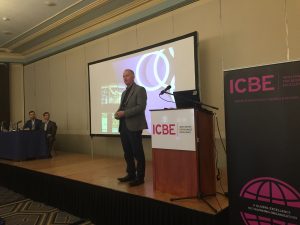 Barry introduced his presentation with a personal story of when he had cancer and linked it to how the Irish Manufacturing Research centre of which he is CEO approached its research. He then discussed what IMRs function was to ‘demystify, derisk and deliver emerging technologies for manufacturing industries. He discussed the thematic areas that they are currently prioritising such as Augmented Reality, Virtual Reality, Collaborative Robotics, Additive Manufacturing and Industry 4.0 covering data analytics, optimisation of manufacturing lines.
Barry introduced his presentation with a personal story of when he had cancer and linked it to how the Irish Manufacturing Research centre of which he is CEO approached its research. He then discussed what IMRs function was to ‘demystify, derisk and deliver emerging technologies for manufacturing industries. He discussed the thematic areas that they are currently prioritising such as Augmented Reality, Virtual Reality, Collaborative Robotics, Additive Manufacturing and Industry 4.0 covering data analytics, optimisation of manufacturing lines.
He explained why manufacturing was important citing the demise of the TV industry in the US and Europe before moving on to show how important manufacturing was to the island of Ireland. He quoted numbers of 36% GDP from the IDA versus an EU average around 15% GDP and showed that indigenous manufacturing accounted for over 60% of manufacturing in Ireland and that’s with a backdrop of MNC investment into Ireland which is the envy of most other countries in the World.
Barry spoke of the challenge and opportunities of emerging technologies for industries. He discussed the 4 industrial revolutions in the context of business models and who controlled the industries in the 4 stages. He showed how digital technology has disrupted traditional business models such as the hotel industry with Airbnb and the taxi industry with Uber. Barry then moved on to look at how industries such as the car manufacturers in Detroit were decimated during the automation revolution during Ind 3.0 and warned that industries in Ireland cannot be complacent and afford to be left behind.
His talk then moved onto some examples of emerging technologies such as AI (Artificial Intelligence). He discussed how AI for instance has the power to do good such as interpret better than a human things such a CT scans in medicine but equally talked of a case where an AI engine online became a racist. He warned that as we embrace these technologies we do so with our eyes wide open and discussed the need for, in certain circumstances, for potential legislation to be considered. He stated that Ireland needs to decide the kind of society it wants and to look at the ethics of these systems. Nonetheless he stressed these technologies are here and that we must embrace them for all the good they bring.
He then went on to talk about the advantages of digitising of manufacturing lines, collaborative robotics, additive manufacturing / 3D printing before answering questions from Matt Cooper and the audience.
Over the course of the day 11 groups of 10 people debated a series of challenges posed by the speakers under the Productivity, People and Technology pillars.
The following is a summary of the inputs from each of the tables moderated by the chair and captured by the scribe following pair discussions and group sharing.
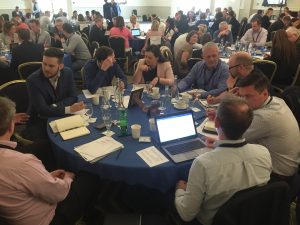
How to engage the senior leadership team in a difficult change journey.
At the Table:David Dunne, James Herbert, Martine Denihan, Sinead Sweeney, Eimear ‘Reilly, Pat Groves , Gemma Murphy, Jane McMorrow, Olive Farrington
Conversation
Daily meetings and huddle meeting and how we are performing are a key engagement point for senior leaders. We are lacking management at these engagement meetings which is a missed opportunity. This is seen as lack of commitment by the organisation. Changing this would facilitate better alignment at all levels.
We see engagement within team but lacking across all levels in the organisation.
There is not a divergence of objectives but not supported daily.
Leaders need to lead by example, sometimes we need to pull them in initially and call them on be consistent.
We have found for the need to pilot with the leadership team“ create the wins with
advocates to get the resistors on board.
We saw engagement and true Alignment - when we move change item beyond the mfg floor.
Show casing wins across the organisation facilitated getting converts in different support group.
We see that we take two steps forward but constantly fall back and then repeat.
People – Leadership – Strategy – Behaviours- Tools and Techniques.
Commitment at the top is where it need to start
Making measurement of people’s adherence to behaviour standards help in change those away from standard
Leaders standard work – and getting the true understand of the WHY and wrapping it around the change initiative is key
Leadership needs to be vulnerable but struggle with the concept.
Leaders can come from a position of portraying that they know it and will do it but their behaviours are not supporting that position and need to be changed.
Same production systems across different plants with different outcomes and this is down to deployment methods and leadership traits.
This can be a positive impact but just as easy a negative impact.
A key in engagement is strategies which incorporates all levels of the organise not just focused on pockets.
Key Takeaways
What does your company need to do to develop and retrain your top Talent?
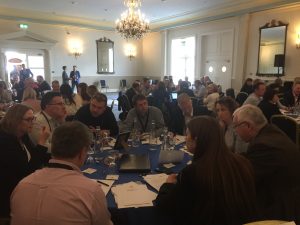 At the table: David Dunne, James Herbert, John Cheevers, Stephen Griffin, Cianna Reilly, Kevin Woulfe, Olivia Boyce
At the table: David Dunne, James Herbert, John Cheevers, Stephen Griffin, Cianna Reilly, Kevin Woulfe, Olivia Boyce
Summary of the conversations
The business needs to be understood and they need to frame up the why and link it with the personal why – when these are linked its “Win” scenario
Why only focus on Top Talent – should be a focus on un tapped talent in the organisation
If they are Top Talent nudge them and let them take control over their own training development plan. They are normally in a position to drive this.
Business drivers linked to personal area of interests deliver the best outcomes.
Need to be carefully not to push someone in a certain direction just because there is a business need as it could demotivate the individual.
Need to set the person up for success – Needs to stretch them for success not for failure.
Support the individual between Peer to Peer support is an effective bridge when individual as stepping back into the retrain world. Understanding where people are at from a personal point of view and developing a tailored support plan can be a key to a successful outcome.
Force movement of talent is there a place? Consensus that this is not normally a recipe for success.
Link in with external providers of training to make content relevant. – This creates the right environment to support your talent.
Ensure there is commitment from the organisation that there is something at the end of the investment for the individual. This can’t always be the case but should be the norm.
Recognition by management and the organisation for the achievement of individuals needs to be seen.
Dynamics within the organisation, that you can go from product builder to Senior – It’s the norm that development occurs at all levels.
Ensure courses are keep relevant and ensure the course stay current and linked to business needs.
5 Point Plan for success
Understand that some of the business conditions can be a hindrance to retaining people. Need to understand both internal and external conditions as changes in
these can impact flow out and in of talent.
Balance when going thru huge change cycle – Sometimes is make sense to keep people in the same role for stability-
Developing and promoting just internal candidates can create a stall different thinking within and organisation.
Need to be strategic around bringing in outside talent and that the organisation sees this as a normal activity. This has the ability to on board new idea and but be careful not to acclimated them into the way of doing things.
A culture of benchmarking when done right can also be an avenue to bring in fresh idea’s into an organisation.
External environment can also drive movement - need to be able to protect against this
Opportunity around developing a training targeted on segment of the workforce that have being out of the loop for a while and have key skills but are apprehensive about returning due to lack of confidence and certain skills e.g. stay at home parents.
Key Takeaways
How to engage the senior leadership team in a difficult change journey?
Table 2 People Challenge
What does your company need to do to develop and retrain Top Talent?
Identify who to up skill and it has to be a mixed solution with external, internal training
examples
Lean Business Programmes
Lean Management Training
Leadership Programmes
Development planning with identified staff ascertain what they want for their future where their talents lie within the company, put the structures in place to achieve this..
Location especially in remote areas is a huge problem with retaining talent, have looked at targeting 2nd level students with school outreach promoting science subjects
Looked at pools of talent out there such as home makers and offered a solution of front loading production at times when there was a great availability of talent example. 9am-12noon
Lack of maturity in new and emerging areas such as automation
What is the impact of new technologies?
Going forward it would be helpful to have more detail re 3D printing in volume manufacturing.
ethical issues noted in regard to simulated glove being used in military applications while being developed in a neutral country.
one way in dealing with technology is looking at how could this technology be applied to a problem that organisations
need to demystify technology
need to hear from early adapters and how they are keeping up with technology how they anticipated change and adapted.
With technological advancement we need manage people effectively during change and make them accepting of change with familarisation, education
Could our contribution to the Shingo process be looking at people through technology
with technology advancements job specs are no longer static, roles are constantly changing
Worry that technology might affect other roles 3D printing reducing the need for warehousing and supply chain
Suggestions for further conferences
Pre conference questionnaires on technology issues affecting organisations
Concentrate on 3 or 4 key upcoming/ game changing technologies and discuss at conference
People process change management and acceptance- link it together and re-inforce it
How to engage the senior leadership team in a difficult change journey?
How to engage senior leadership team in difficult change journey?
a. Create cohesion within leadership team, be visible........
b. Create awareness of the need for change, what are the benefits in the message, engage with everyone in overall strategy/approach
c. Generate benefit first within leadership group first, meaningful and felt leadership.........not staged but real visible presence, train front line leaders what to expect and how to manage the change process
Summary: HOW this is achieved?
Model behaviour, leaders step up to the plate, agree overall coherent plan in order to achieve above points
What does your company need to do to develop and retrain top talent?
a. Strategic review of knowledge & Skill Gap Assessment to achieve, design training approach to meet strategic objectives, Implement training effectively, assess and evaluate training effectively. Review strategy on iterative basis to identify cyclical gaps.
b. Coach leaders to engage staff to drive performance. Deelop skills matrix to align to strategy, insert programs. .......GROW Program in Boston Scientific ...link training to business performance.
c. Learn by doing, op ex coaches, ...focus on execution but also COACHING juniors
Summary: Use structured training model to design, develop, implement and build an evaluation strategy that maps to the organisational strategy/business
requirement, and to develop the key interpersonal competencies to enable the trainee sustain the business process requirement.
What is the impact of new technologies?
Where are the jobs going to be in? What investment in Human Capital is required for the future if the established jobs of today no longer exist.
Is there a think tank needed to review a potential future strategy...what are the skills needed for the future...are our universities positioned for this? Also, do we need to develop the broader interpersonal skills such as change management skills to provide us with the agility and flexibility that is required to deal to the lack of certainty.
The ethics and the strategy of the organisation? Should there be an Irish strategic board that looks at what is acceptable and non acceptable practice re AI? Needs to be thought through...not the mechanism of learning by mistakes....Link into the futuristic societies.
How to engage the senior leadership team in a difficult change journey?
Realign expectations, responsibilities and roles as Leaders don’t recognize their own roles, sometimes they dictate rather than act.
Agree on a platform to use to communicate the journey you are on (tools, systems etc) and recognize the leadership journey required.
Have the ability to connect with everybody in the organization, its ok to be vulnerable, this will help to create a shared purpose
Its important for the leadership team to look inwards, see how it applies to them and understand the “why”
Understand the “what”, identify the expected behavior, stick to what you say you are going to do. Sometimes there may be a need to bring in an outside expert to kick start the process.
What does your company need to do to develop and retrain Top Talent? Succession planning, need to develop leadership skills. Lateral moves can be a good thing, can be a hard sell at times but is a huge benefit to organizations; need to tell people it’s a developmental role.
Implementation of Leaders standard work is a very useful tool to help new leaders, its great way to get new leaders aligned. Allow employees to gain confidence in a leadership role on a trial basis e.g effective coverage during vacation periods. Can be used in all organizations within the company.
Clear sense of company/site purpose and direction in order to identify the training needs of the business to align to the long-term vision
Throw away the traditional way of thinking, go and talk to the employees, create a positive feedback loop. Share the long-term vision with all employees can encourage them to seek out training and up skilling.
Ability to identify individuals for training, sometimes people have trouble identifying training opportunities, need to have outside eyes.
Need to develop the soft skills for high performing individuals but need to use “what’s in it for me”!
Ask the employees first before developing a training package to ensure the relevant training is setup to align with the strategy and the direction for the company.
What is the impact of new technologies?
Potential productivity improvements, opportunity for people to use new technologies, can also aid operational efficiency
Opportunity for Ireland to be a leader in this technology, indigenous companies can access new markets
Nervous about new technology, too much data can slow down decision making.
Need to design with the operator involved, big challenge to integrate people with the rate of change.
The use of technology is totally changing the way we work, but we need it in a manner that people can use.
Traditional business model is being threatened by new technology but there are opportunities for both small companies to embrace the change quickly.
Need to change the skillset to deal with the new technology therefore practical implementation needs to be carefully planned.
Companies focused on automation but there is a scarcity of skillset to manage it as we have not maintained the development of people to sustain it, how do we bridge the gap.
Security concerns need to be taken into account as well as a deeper discussion on ethics related to AI
Productivity Challenge – How to engage the senior leadership in a difficult change journey?
What does your company need to do to develop and retrain Top Talent?
What is the impact of new technologies?
Some positives for the advances
Negatives include
Generational changes – younger generation will solve problems using technology which can be positive or negative as this allows them to investigate more difficult problems or issues once they use technology to get the answers or results.
Automated equipment is being used to make good decisions.
It is being heavy regulated so this is a barrier in trying to utilise the equipment fully and to its capacity.
Keeping up with regulations is costly. Seems to be an issue around our table and a challenge as there is a gap in what is required from the regulatory body and the information companies have on the technology.
How to engage the senior leadership team in a difficult change journey?
Alignment top down
What does your company need to do to develop and retrain Top Talent?
Retrain and Retain
What is the impact of new technologies?
How to engage the senior leadership team in a difficult change journey?
What's in it for me?
Overall vision and the translation of that vision
Behaviour through the organisation
Communication message and style
What does your company need to do to develop and retrain Top Talent?
What is the impact of new technologies?
How to engage the senior leadership team in a difficult change journey?
What does your company need to do to develop and retrain Top Talent?
What is the impact of new technologies?
How to engage the senior leadership team in a difficult change journey?
What does your company need to do to develop and retrain Top Talent?
What is the impact of new technologies?
HOW TO ENGAGE THE SENIOR LEADERSHIP TEAM IN A DIFFICULT CHANGE JOURNEY
WHAT DOES YOUR COMPANY NEED TO DO TO DEVELOP AND RETRAIN TOP TALENT
WHAT IS THE IMPACT OF NEW TECHNOLOGIES
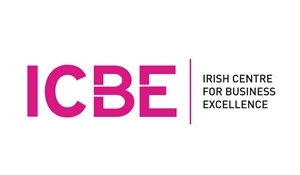
As a not for profit members based organisation we are here to help you advance your organisation. Please contact us to see how we can help.